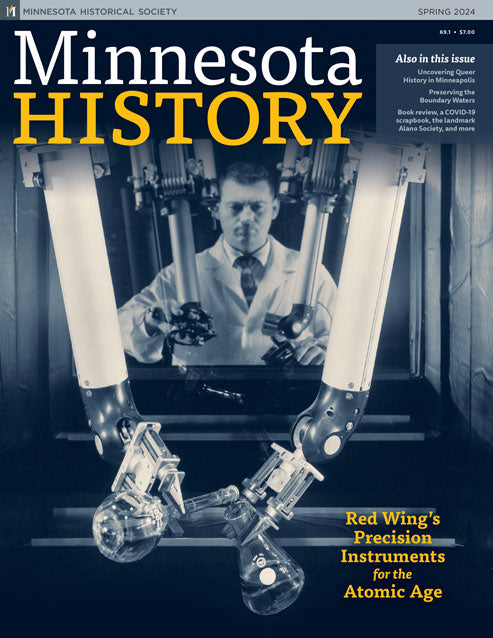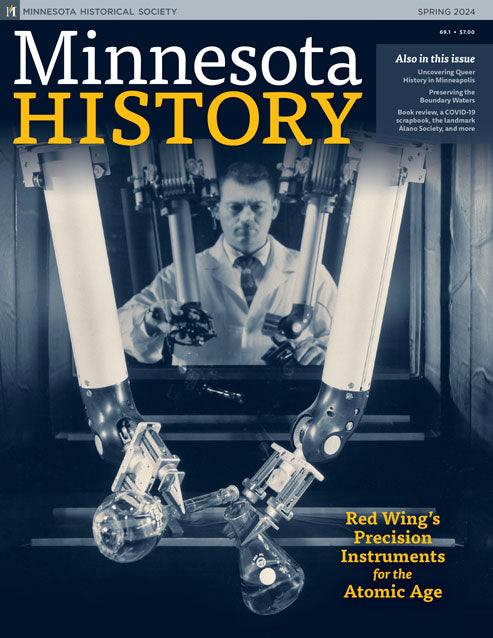Minnesota History Magazine Spring 2024 (69.1)
Minnesota History Magazine Spring 2024 (69.1)
Couldn't load pickup availability
Departments
Editor’s Note
Pam McClanahan
EyeWitness
Dave Kenney
Cover Up: Harriet Whitney Frishmuth’s sculpture, Scherzo
Curator’s Choice
Jennifer Huebscher
A COVID-19 Scrapbook
LandMarks
Ginny Way
Alano Society of Minneapolis, Hennepin County
Book Review
Laurie Hertzel
Gunflint Falling: Blowdown in the Boundary Waters by Cary J. Griffith
Take Three, News & Notes, Looking Back
Preserving > Sharing > Connecting
Digitizing Minnesota’s Newspapers
Articles
Central Research Laboratories: Precision Instruments for the Atomic Age
Frederick L. Johnson
The history of Red Wing’s Central Research Laboratories during the early years of America’s nuclear industry is a complex and fascinating story. Author Frederick Johnson traces the work of modest but brilliant American scientists, mainly Gordon Lee, Frank Chesley, and Demi Jelatis, in the making of a world-class research laboratory and manufacturing facility here in Minnesota at the dawn of the Atomic Age.
Going Out, Diving In: Uncovering Queer History in Minneapolis
Noah Barth
Author Noah Barth presents detailed stories of three sites featured in the recent MNHS exhibit Going Out, Coming In: Onyx Bar, Sutton Place, and the Locker Room Baths. The sites are situated within three pivotal moments in queer history: during and immediately after World War II; during the gay liberation movement of the late 1960s and early 1970s; and during the sexual liberation of the 1970s and the onset of the AIDS epidemic in the 1980s. Barth also sets out his work as a historian to illustrate the challenges and rewards of researching and exhibiting queer history for public audiences.
From the Archives: Sound Politics: Wilderness, Recreation, and Motors in the Boundary Waters, 1945–1964
Mark Harvey
The area now known as the Boundary Waters Canoe Area Wilderness (BWCAW) had no formal name and no protection from damage caused by humans before the landmark passage of the federal Wilderness Act of 1964. During the mid-twentieth century, wilderness preservationists looked with growing concern at this vast region sprawling along the international border between northeastern Minnesota and southwestern Ontario. Author Mark Harvey details the deep rifts and protracted struggles over motorized recreation among Minnesota’s outdoor enthusiasts, debates that mirror conflicts about the preservation of the Boundary Waters that remain to this day.
Share


